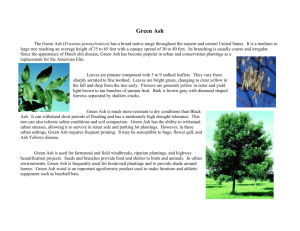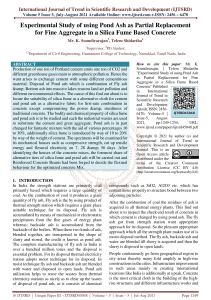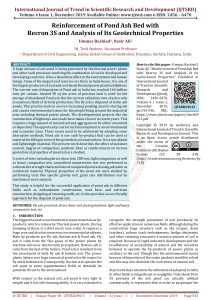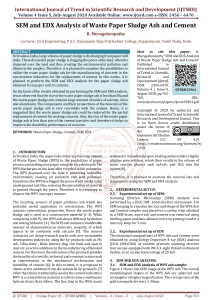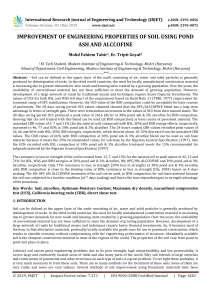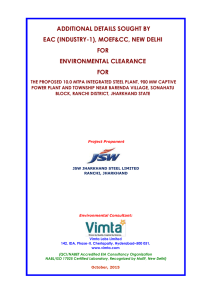REDUCTION IN COST OF CIVIL WORKS OF THERMAL POWER PLANTS... BY THE REVIEW COMMITTEES OF EXPERTS CONSTITUTED IN CEA
advertisement
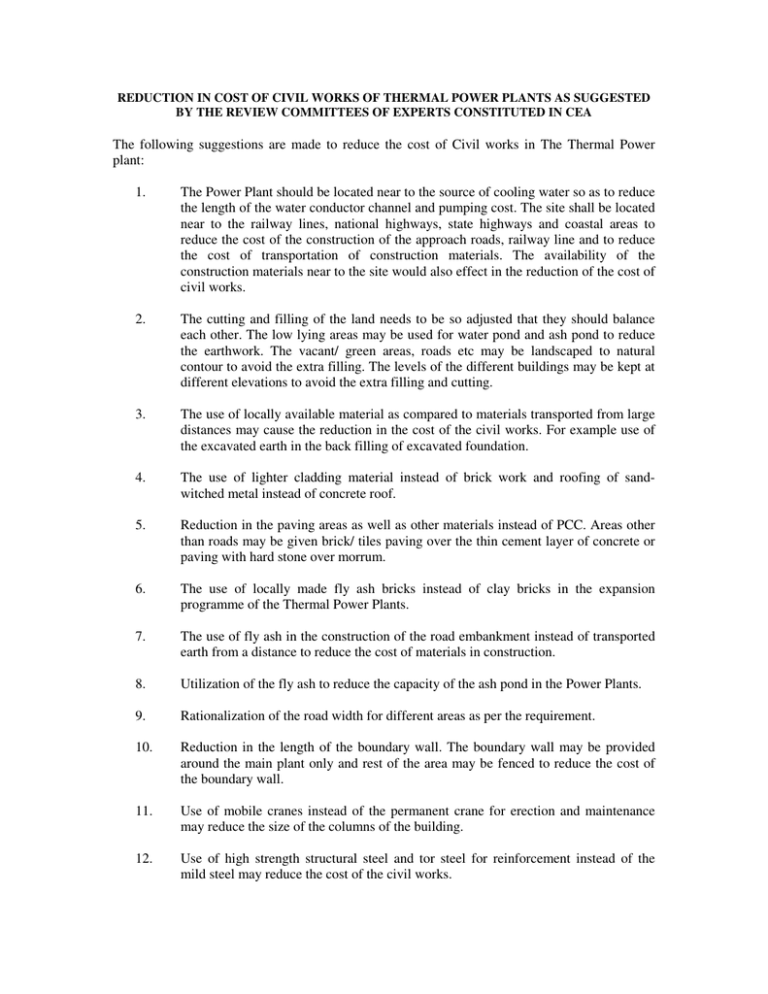
REDUCTION IN COST OF CIVIL WORKS OF THERMAL POWER PLANTS AS SUGGESTED BY THE REVIEW COMMITTEES OF EXPERTS CONSTITUTED IN CEA The following suggestions are made to reduce the cost of Civil works in The Thermal Power plant: 1. The Power Plant should be located near to the source of cooling water so as to reduce the length of the water conductor channel and pumping cost. The site shall be located near to the railway lines, national highways, state highways and coastal areas to reduce the cost of the construction of the approach roads, railway line and to reduce the cost of transportation of construction materials. The availability of the construction materials near to the site would also effect in the reduction of the cost of civil works. 2. The cutting and filling of the land needs to be so adjusted that they should balance each other. The low lying areas may be used for water pond and ash pond to reduce the earthwork. The vacant/ green areas, roads etc may be landscaped to natural contour to avoid the extra filling. The levels of the different buildings may be kept at different elevations to avoid the extra filling and cutting. 3. The use of locally available material as compared to materials transported from large distances may cause the reduction in the cost of the civil works. For example use of the excavated earth in the back filling of excavated foundation. 4. The use of lighter cladding material instead of brick work and roofing of sandwitched metal instead of concrete roof. 5. Reduction in the paving areas as well as other materials instead of PCC. Areas other than roads may be given brick/ tiles paving over the thin cement layer of concrete or paving with hard stone over morrum. 6. The use of locally made fly ash bricks instead of clay bricks in the expansion programme of the Thermal Power Plants. 7. The use of fly ash in the construction of the road embankment instead of transported earth from a distance to reduce the cost of materials in construction. 8. Utilization of the fly ash to reduce the capacity of the ash pond in the Power Plants. 9. Rationalization of the road width for different areas as per the requirement. 10. Reduction in the length of the boundary wall. The boundary wall may be provided around the main plant only and rest of the area may be fenced to reduce the cost of the boundary wall. 11. Use of mobile cranes instead of the permanent crane for erection and maintenance may reduce the size of the columns of the building. 12. Use of high strength structural steel and tor steel for reinforcement instead of the mild steel may reduce the cost of the civil works. 13. In the A-B Bay the TG floor shall be designed for the actual equipment load and the location of equipments and the loading considered for the design of the floor shall be displayed. Maintenance bay in TG floor shall be shifted to the ground floor. Mobile cranes shall be used instead of the overhead fixed crane to reduce the size of columns in the A-B bay. 14. Outdoor type of pumps and D.G. sets may be used to avoid the cost of the building for water treatment plant, D.G. set room, CW Pump House, Auxiliary Pump House, Ash slurry Pump House, etc. 15. The steel and cement shall be supplied by the Project Authorities to avoid the contractor’s profit on the purchase of these items. This will also effect in the better quality of these material and reduction in the cost. 16. Batching plant for major works may be provided by the Project Authorities to reduce the cost as this can be used by all the contractors and the quality of the work will also improve. 17. The bay width and size of the building may be reduced by providing the intermediate columns and adjusting the equipment layout to reduce the sizes of columns and beams thereby reduction in the civil cost. 18. The prefabricated structures may be used in the construction of the colonies, toilets, guard room and temporary structures to reduce the civil cost. 19. The floors in the various buildings in the power plant shall be designed for the actual equipment loading and not for the uniform loading as is the usual practice to reduce the size of various structural components. 20. Reduction in the taxation and duties e.g. reduction in excise duties on the cement & steel and local taxes on the various works would cause in the reduction of the civil cost. 21. The environmental norms may be relaxed to avoid the lining in the ash pond and to use the ash pond earth in the construction of the starter dyke to reduce the civil cost. Further, the height of the chimney shall be rationalized to reduce the civil cost of the chimney. 22. Safety measures shall be adopted to avoid the time and cost overruns due to some accident taking place for not taking the safety measures.


